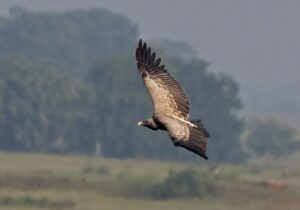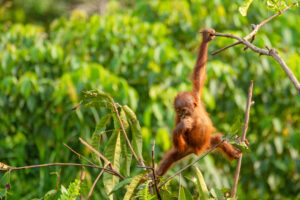How exactly do you protect a wave? By prohibiting any construction that could affect its formation, as Peru has done with the Chicama wave, the world’s longest wave. It is the first and only protected wave in the world.
What makes this wave so special that it needs legislative backing?
The Chicama wave’s official name is Mamape, which translates into “never-ending wave”. These wave sets appear on Peru’s northwestern coast, rolling in from the South Pacific near the sleepy town of Chicama. The town has experienced a big tourism boost, particularly from surfers. The phenomenon only gained exposure in the 1960s, when surfer Chuck Shipman visited the area from Hawaii and noticed how long the wave was. Local surfers Ivo Hunza, Oscar Malpartida, and Carlos Barreda surfed it for the first time in 1966.

Chicama is the longest wave in the world. Photo: Ze Roberto Muniz/Shutterstock
It forms almost perfectly and is mostly hollow, thanks to the lack of reefs. The sea bed is mostly sand. The deserted Chicama shoreline culminates in a diamond-like headland. This makes the swells coming from the south wrap around the tip and form multiple wave lines — up to 50. These travel farther up the coast than any wave in the world.
Safe for surfers
The waves are popular with surfers since they can continue up to four kilometres in ideal conditions. In order to form the perfect wave for surfers, swells must be greater than 1.8m (6ft). A wave has the potential to last about four minutes. In 2012, a surfer named Cristobal de Col surfed the wave for two minutes and 20 seconds.
The wave has a total of four breaks. The wave begins at Malpaso, before transitioning to Keys, El Point, and El Hombre. Each break has its individual characteristics. El Point is the most popular section because surfers can ride it for an entire kilometre.
While it is possible to surf all the way to the pier at the end, a couple of kilometres further, this happens seldom and usually only during bigger swells. The waves are best from April to October when lingering winds and swells from storms brewing in the Pacific reach Peru.
Can the waves be dangerous? The waves themselves are manageable for all levels of surfer. However, the area features a strong current called the Chicama Rio. This is why a nearby boat service stands by to assist surfers unable to paddle back to shore.

Chicama’s headland. Photo: marcosvelloso/Shutterstock
Efforts to protect these unique waves took more than a decade. Law number 27280 finally passed in 2016. It forbade construction within one kilometre of the headland because it might compromise the formation of the waves. International wave protection groups hope to get 130 more waves on this list. Similar waves occur in Namibia, South Africa, and Australia, although they are not as long as those at Chicama.






